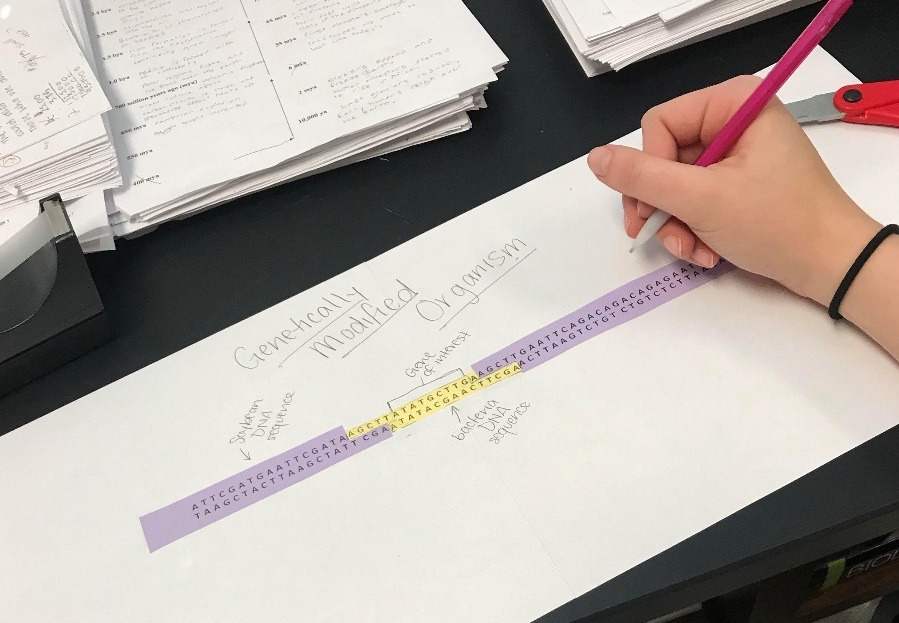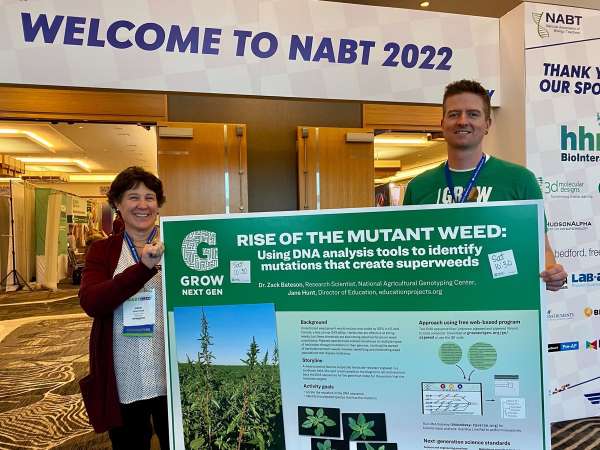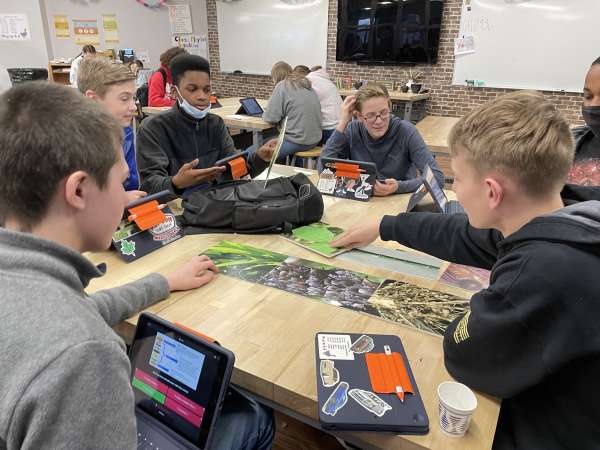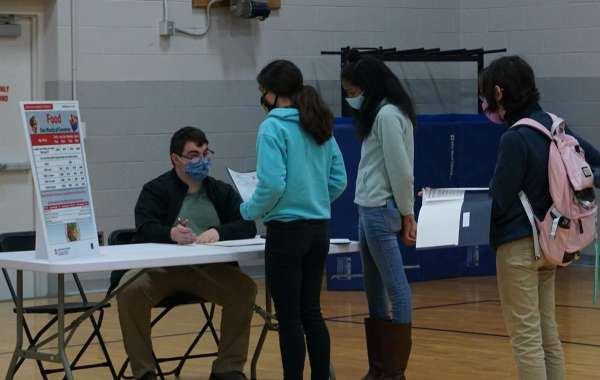Jared Lovin teaches at Miamisburg High school. He attended Ohio Soybean Council’s Ag Biotech Academy and shares about his experience:
During my 13 years of teaching biology, students consistently struggle with restriction enzymes. Having the GMO Restriction Enzyme activity from the AgBiotech Academy alleviated much of the students’ confusion.

I used the activity with both my honors biology and general biology classes. In general biology, students worked with their lab groups to build the transgene, and I led the groups step by step if needed. Students understood the concept of needing to remove the gene of interest, but some were confused about where to cut the gene. As a class, we discussed the recognition site, and I demonstrated how/where to cut. This guided process benefited my general biology class immensely. After we inserted the gene of interest into the soybean sequence, I had them label the completed transgene with the following terms: bacterial DNA, soybean DNA, gene of interest and genetically modified organism.

Biology honors completed the same process with greater student-driven activity. Each biology honors student had to complete the activity, but they could discuss issues within their lab groups. If an entire lab group hit a road block, I would help clarify the next step. This method worked extremely well for my honors class. Group members assisted and taught each other. After students completed the activity, I wrote the terms on the white board, and they were responsible for correctly labeling the model. Afterwards I checked the finished product.
Overall, this activity was the most helpful restriction enzyme activity I have ever completed with a class. I think organizing the activity as a guided and open activity for my general and honors class, respectively, aided in the student’s understanding. My general class needed more checkpoints, and guided instruction provided these checkpoints. I am definitely going to use this activity again. Having students see a DNA sequence and actually model the restriction enzymes makes a very difficult, abstract concept truly concrete.
The field trip to the Sunrise Co-op test plots was a highlight of the Ag Biotech Academy. I enjoyed learning about the science behind field monitoring. I was able to take that information back to my AP Environmental Science students. I also enjoyed both talks from DuPont leaders Kyle Poling and Kirk Reese. Once again, I was able to take the information on genetically modified crops back to my classroom to share.
Furthermore, Kirk Reese’s talk gave me information on career paths. I have shared this information with my students, not only the specific information about the agriculture business, but also information on hiring practices. Kirk discussed traits such as problem solving skills that he looks for when interviewing potential employees. Most students think hiring is about the grades and classwork. I don’t think they understand that the intangibles are just as important.




Share this